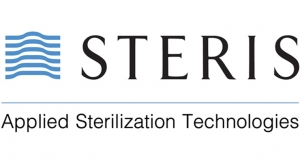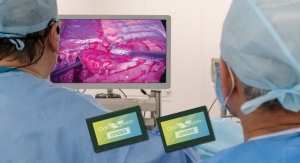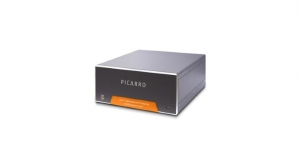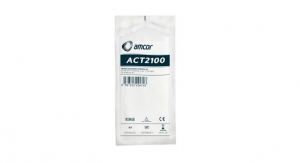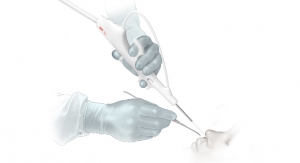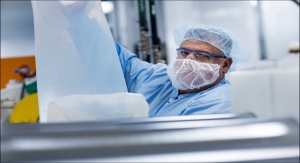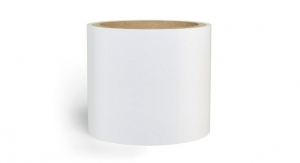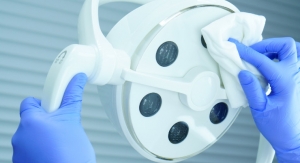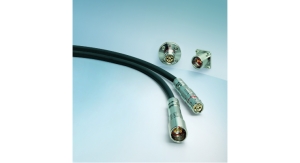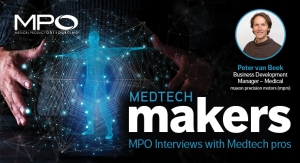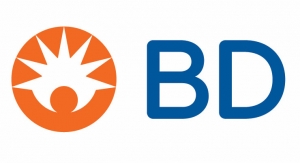Mark Crawford, Contributing Writer06.09.16
Packaging and sterilization are often overlooked in the medical device manufacturing process. It doesn’t matter how fantastic a product is—if packaging and sterilization are short-changed, the result is rework, delays, and possibly even bad patient outcomes and litigation. Medical device manufacturers (MDMs) invest plenty of time and money in designing and engineering new devices—even more reason to protect that investment by dedicating the necessary packaging and sterilization resources to ensure end users receive intact, sterile, and safe products.
This resolve is even more important today as devices become smaller and more complex. Packaging and sterilization are not as straightforward as they used to be. For an increasing number of new products, existing packaging and sterilization techniques need to be adapted or combined, or new technologies developed, to ensure safe delivery.
As a result of these growing needs, the medical device packaging and sterilization markets are growing as more OEMs outsource these services. OEMs count on contract manufacturers (CMs) and other supply chain partners to integrate products and reduce costs, including those for packaging and sterilization. To stay competitive, more suppliers are trying to improve their value in the supply chain by provide packaging and sterilization support.
“The recent MD&M conference listed over 400 companies offering contract manufacturing and packaging services,” said Tom Nadal, director of business development for CleanCut Technologies LLC, an Anaheim, Calif.-based provider of advanced medical device packaging solutions. “It’s a growing market being led by those companies that are able to provide an increasingly comprehensive level of services demanded by OEMs.”
Those services include solutions to key challenges such as proposed material changes, risk mitigation, and new compliance requirements, as well as assisting clients in redesigns to manage reduced space, labeling, and cost-down measures.
“This takes dedicated resources that were not typically required in the past, when we were provided a predetermined packaging configuration,” said Stephanie McGee, vice president of marketing for Command Medical Products Inc., an Ormond Beach, Fla.-based contract manufacturer of disposable medical devices.
Such changes present new considerations for risk management as clients work to reduce the use of trays and other expensive options. Package prototyping and mock distribution trials are also in higher demand. “The benefit to this additional work,” stated McGee, “is that we are able to provide clients with improvements in parallel as we bring new products on board, with minimal impact to overall project schedule.”
OEMs even want their packaging suppliers to go beyond the technological aspects of materials and package engineering to help with design work and branding.
“Our clients challenge us to strike a balance between distinct package designs that stand out and speak to their target end users, and that also present a strong brand identity,” said Karla Horton, marketing manager for Unicep Packaging, a Spokane, Wash.-based provider of liquid and gel contract manufacturing and packaging. “Whether we are sourcing packaging, or creating packaging options for them, we must know their brand and create a cohesive solution for them—all while maintaining a strict focus on cost and sustainability.”
Saving Money Through Efficiency
It is difficult for suppliers to reduce costs when products are becoming more challenging to manufacture, package, and sterilize, but OEMs expect it. To keep costs down, contract manufacturers and their suppliers focus on maximizing efficiency by streamlining operations, improving processes, and employing best practices—cost savings here and there all add up.
For example, vendors are finding new ways to reduce material waste (and the associated carbon footprint) by avoiding unnecessary carton fillers or extra packaging. “This involves reviewing processes to improve efficiency, and even looking at older processes with fresh eyes,” said Betty Howard, Radiation TechTeam manager for STERIS Applied Sterilization Technologies, a global provider of contract sterilization and laboratory services.
As they expand their capabilities and streamline operations, vendors rely more on automated processes to increase efficiency, reduce errors, optimize maintenance, maximize throughput, and reduce costs.
“For example, packaging companies that supply the pharmaceutical drug delivery market are using transit trays to move parts within the process, and to transport between locations, as volumes grow,” said Sean Egan, group marketing manager for Nelipak Healthcare Packaging, a Cranston, R.I.-based developer and manufacturer of cleanroom packaging for the medical device industry. “As a critical part of the process, a deep understanding of how packaging solutions must match automation requirements is increasingly important to ensure the most efficient running of high-speed lines.”
Ultimately, OEMs want to turn the packaging and sterilization steps over to trusted supply chain partners who are willing to accept more responsibility and provide complete turn-key solutions, reducing overall cost of ownership to the OEM. This includes traceability, which is increasingly critical for creating a robust, smooth-flowing system for managing the purchase of components and the quality of the supply base. Shortening the supply chain to as few key vendors as possible improves efficiency, shortens turn times, and speeds delivery to market—three things OEMs desperately seek.
As a result, OEMs are always on the hunt for full-service contract providers who can “offer solutions, design the packaging, provide rapid prototypes, work on iterations with the OEM’s engineers, produce the packaging, create necessary documentation, perform validations, package in a Class 7 or 8 cleanroom, sterilize, and offer fulfillment services,” said Nadal.
Dealing with Complex Devices
Standard sterilization methods are higher-temperature gamma, ethylene oxide (EO), and e-beam sterilization processes. Although each of these has its advantages, EO is generally considered the most material friendly. However, with more complex devices, combined materials, and embedded electronics and power sources, there is greater demand for less-harsh sterilization methods. More devices are increasingly sensitive to heat and sterilant residual retention, including combination drug/medical devices and biological devices. Sterilizing these products often requires technical refinements to existing technologies, such as processing at lower temperatures, lower humidity, and/or using a shallower vacuum.
Complex devices that are more sensitive to sterilization processing may also create safety concerns for the technicians, especially with EO sterilization. “Many smart devices include their own power supply,” said Ken Gordon, EO TechTeam manager at STERIS Applied Sterilization Technologies’ Spartanburg, S.C.-based EO Technology Center. “The stored energy in these devices must be assessed for safety reasons, prior to processing.”
Due to the flammable properties of EO, it is critical to design the process to reduce atmospheric oxygen below 3 percent prior to sterilant admission. However, the environment inside the processing load is not necessarily homogeneous. “Thus,” added Gordon, “safety also necessitates ensuring that devices cannot ‘turn on’ or release energy during processing to the degree of creating an ignition source.”
Pros and cons exist for every sterilization technology. The sterilization method selected can limit the number of suitable packaging options for the product. For example, EO sterilization requires breathable packaging.
“Packaging should be designed to allow gas ingress and egress for rapid dissipation following EO sterilization,” said Nadal. “Raw packaging materials are selected that provide adequate shelf life [typically three to five years] following sterilization and product aging/shelf life. Raw materials are also formulated to allow e-beam and gamma sterilization, without discoloration and embrittlement.”
As increasing device complexity brings more challenges to standard sterilization procedures, OEMs are interested in finding innovative sterilization methods that are effective at room temperature and can deliver faster turnaround times (24 hours or less), or even just-in-time sterilization. They are also looking for safer processes. “For example, the EU and California are lowering ethylene oxide residual levels, as this sterilization process is carcinogenic,” noted Mason Schwartz, director of technology for Revox Sterilization Solutions, a Minneapolis, Minn.-based provider of vaporized peractic acid (VPA) sterilization.
The Revox technology injects VPA into a pressurized chamber at room temperature. Peracetic acid vapor delivery significantly improves material compatibility compared to other sterilization methods that incorporate heat, such as hydrogen peroxide, ethylene oxide, and gamma/E-beam irradiation.
“Another advantage of VPA is its ability to sterilize wet tissue devices in a mylar/mylar pouch,” added Schwartz. “The pouch maintains the moisture content of the tissue, while allowing the diffusion of the VPA, without affecting tissue performance or being carcinogenic. Other applications include the sterilization of combination devices, where mated surfaces in the device can be sterilized without impact to the drug, and direct sterilization of large and small molecule drugs.”
Raw Materials
More contract manufacturers are using a formal gap analysis for client-supplied product specifications at the onset of new business integration—especially for raw materials.
“Raw materials are a focal point,” said McGee. “Inputs into the finished device reach beyond functional operation. We consistently find discrepancies in particulate acceptance criteria between the raw parts coming in versus the finished device that is being made.”
This is often the case, she noted, with large technology transfers of legacy devices. Discrepancies result when the final specification of the device is set, but no details or conflicting criteria are established for the raw materials. This inconsistency makes it difficult for the contract manufacturer to ensure the materials provided by the specified raw material supplier meet or exceed the final device specification.
When products are put into a final package that is to be sterilized, certain particulate (loose and embedded) specifications must be met. If raw parts are allowed to come into the CM with excessive particulate, and are not caught at incoming inspection via acceptable quality limit (AQL) sampling, it is possible for these contaminated parts to make their way into finished devices. This means that products can be rejected after labor and packaging materials have been expended.
“Fixing the problem entails rework and sorting at the CM to ensure all product shipped is compliant, resulting in added cost and lost profitability,” said McGee. “Our goal is to prevent occurrences altogether with aligned quality criteria captured in the specifications for both raw materials and the corresponding finished device.”
Resin companies continue to look at new formulations and advances in materials that would be conducive to market needs. The greatest challenge, however, continues to be the acceptance of change. Both medical device and pharmaceutical manufacturers are typically slow to adapt new materials unless there is a pressing need, such as cost or product requirements. New materials only tend to be considered during new product introductions when testing can be carried out in tandem with the testing of the device itself.
“Even in this situation, the preference among companies is to stick with what they know from a material standpoint, or to look for the packaging and/or material supplier to supply data to support the change,” said Egan. “The other challenge for new materials is supply. Resin suppliers introducing a new formulation need to ensure there are enough extruders able to supply the material to the market. No one wants to have a material with only one source available, which can leave them open to supply risks.”
Validation Takes Time
Many MDMs don’t understand the true amount of time it takes to complete a package validation, which is project-dependent and based on the shelf life claimed for the product.
“Control samples and distribution samples can get done relatively quickly; however, the stability elements such as accelerated aging and real-time aging take the longest,” said Scott Levy, senior packaging engineer for DDL, an Eden Prairie, Minn.-based provider of package, product, and material testing for the medical device industry. “Everything up front before the package validation, such as sealer qualifications, labeling, and sterilization, also needs to be factored into the full timeline.”
A full validation includes stability, performance, strength, and integrity testing. The bulk of that time is spent in accelerated aging. A big misconception within the industry is that accelerated aging can be shortened by simply elevating the temperature. “Doing this can cause disastrous results,” said Levy.
Accelerated aging is performed on materials, products, and packaging systems, including packaged medical devices, to provide a theoretical equivalent to real-time shelf life. Accelerated aging testing is based on a thermodynamic temperature coefficient that states for every ten-degree Celsius rise in temperature, the rate of chemical reaction will double.
Currently there are no standards on products regarding accelerated aging. For strictly packaging medical devices, the most common approach is ASTM F1980. For drug/product combinations, or pharmaceutical products, other stability guidelines such as ICH (International Conference on Harmonization) or WHO (World Health Organization) are often consulted.
The common temperatures used in accelerated aging are 50, 55, and 60 degrees C. Some companies try to cut corners by raising the temperature above these levels, which often leads to degradation of the product, its materials, and its functionality; delayed product launches; and lost time in having to do the process all over again.
“Understanding the use of accelerated aging, prior to generating a timeline, is critical to the overall success of the validation, as well as keeping management happy,” Levy noted.
Another area of interest in packaging is unique device identification (UDI) compliance. CMs that provide finished packaging and sterilization services must be ready to handle the UDI requirements that are mandated by the U.S. Food and Drug Administration (FDA). “Although the labeling specifications and barcode contents are the responsibility of the OEM, the CM plays an important role in facilitating the implementation of this change, as well as having equipment and validated processes and procedures in place to meet those specifications and maintain compliance,” said McGee. “This includes writing our own protocols and orchestrating the testing for sterility confirmation, bioburden, and residuals.”
Several excellent resources are available through the FDA for assisting companies with the interpretation of the UDI regulation. An FDA presentation released in March 2016 provides abundant details on requirements, label formatting, data required for submission to the FDA’s Global Unique Device Identification Database (GUDID), and tiered compliance dates. For companies that manufacture procedure kits, the FDA released a draft guidance document on Jan. 4, 2016, to clarify interpretation of what must comply with the new UDI requirements, and under what circumstances exceptions or alternates would be considered.
Get Involved Early
To maximize efficiency and productivity, and control costs, the terminal sterilization method should be decided early in the design process. Knowing sterilization options as soon as possible helps the MDM focus on the appropriate design considerations that will save major headaches down the road. For example, if a product is being designed with EO in mind, the MDM should avoid unnecessary gas path challenges in the device and packaging. If, on the other hand, the product is being designed for irradiation, it is critical that the materials used are compatible and that manufacturing bioburden is as low and consistent as possible.
“Failure to consider your sterilization method until the end can result in a need for more rigorous sterilization processing,” said Gordon. “For EO, this can mean processing at higher temperatures and a potential for higher residues to contend with. For irradiation, this can mean higher doses, which can result in more material degradation. The resulting device may be sterile, but it may end up costing more to process, and the validation may be more complex.”
Another key decision to make early on is the presentation of the product in its shipper, and its primary packaging. The sooner this is accomplished during design, the easier it will be for the sterilizer to determine the most efficient process. However, “don’t make a change without looking at the entire path from manufacture to use,” warned Howard. “Trying to solve one issue may create other concerns. For example, changing a carton—making it smaller (less waste), but much more dense—could impact sterilization load specifications. Packaging that achieves consistent and reproducible presentation to a sterilizer is always a positive.”
Levy sees a fair amount of failures because the packaging system that was chosen was not the best choice for the product. For example, many MDMs tend to believe a pouch system can be used for every type of product. Heavy products or products with unique geometry lend themselves better to a rigid tray system. The flawed thinking is that using an existing pouch with new products will be a faster way to get into the market. This often backfires, delaying the launch of the product. Understanding the design inputs is critical for selecting the correct sterile barrier system for the product, and keeping the sterility maintenance intact.
Package validation is just one step in the process and typically comes at the end of production. “Other suppliers such material providers, thermoformers, and package converters should also be involved, because they have a lot of knowledge about materials and processes, especially when it comes to materials for packages such as pouches and trays,” said Levy. “Machinery providers can provide process validation support and might also consult on material performance.”
“Ultimately,” said Egan, “the biggest challenge for contract packagers and OEMs is controlling cost. Sterilization is about optimizing loads due to the time and cost of the process. Packaging can play a big part in controlling and reducing these costs through efficient design.”
Mark Crawford is a full-time freelance business and marketing/communications writer based in Madison, Wis. His clients range from startups to global manufacturing leaders. He also writes a variety of feature articles for regional and national publications and is the author of five books. Contact him at mark.crawford@charter.net.
This resolve is even more important today as devices become smaller and more complex. Packaging and sterilization are not as straightforward as they used to be. For an increasing number of new products, existing packaging and sterilization techniques need to be adapted or combined, or new technologies developed, to ensure safe delivery.
As a result of these growing needs, the medical device packaging and sterilization markets are growing as more OEMs outsource these services. OEMs count on contract manufacturers (CMs) and other supply chain partners to integrate products and reduce costs, including those for packaging and sterilization. To stay competitive, more suppliers are trying to improve their value in the supply chain by provide packaging and sterilization support.
“The recent MD&M conference listed over 400 companies offering contract manufacturing and packaging services,” said Tom Nadal, director of business development for CleanCut Technologies LLC, an Anaheim, Calif.-based provider of advanced medical device packaging solutions. “It’s a growing market being led by those companies that are able to provide an increasingly comprehensive level of services demanded by OEMs.”
Those services include solutions to key challenges such as proposed material changes, risk mitigation, and new compliance requirements, as well as assisting clients in redesigns to manage reduced space, labeling, and cost-down measures.
“This takes dedicated resources that were not typically required in the past, when we were provided a predetermined packaging configuration,” said Stephanie McGee, vice president of marketing for Command Medical Products Inc., an Ormond Beach, Fla.-based contract manufacturer of disposable medical devices.
Such changes present new considerations for risk management as clients work to reduce the use of trays and other expensive options. Package prototyping and mock distribution trials are also in higher demand. “The benefit to this additional work,” stated McGee, “is that we are able to provide clients with improvements in parallel as we bring new products on board, with minimal impact to overall project schedule.”
OEMs even want their packaging suppliers to go beyond the technological aspects of materials and package engineering to help with design work and branding.
“Our clients challenge us to strike a balance between distinct package designs that stand out and speak to their target end users, and that also present a strong brand identity,” said Karla Horton, marketing manager for Unicep Packaging, a Spokane, Wash.-based provider of liquid and gel contract manufacturing and packaging. “Whether we are sourcing packaging, or creating packaging options for them, we must know their brand and create a cohesive solution for them—all while maintaining a strict focus on cost and sustainability.”
Saving Money Through Efficiency
It is difficult for suppliers to reduce costs when products are becoming more challenging to manufacture, package, and sterilize, but OEMs expect it. To keep costs down, contract manufacturers and their suppliers focus on maximizing efficiency by streamlining operations, improving processes, and employing best practices—cost savings here and there all add up.
For example, vendors are finding new ways to reduce material waste (and the associated carbon footprint) by avoiding unnecessary carton fillers or extra packaging. “This involves reviewing processes to improve efficiency, and even looking at older processes with fresh eyes,” said Betty Howard, Radiation TechTeam manager for STERIS Applied Sterilization Technologies, a global provider of contract sterilization and laboratory services.
As they expand their capabilities and streamline operations, vendors rely more on automated processes to increase efficiency, reduce errors, optimize maintenance, maximize throughput, and reduce costs.
“For example, packaging companies that supply the pharmaceutical drug delivery market are using transit trays to move parts within the process, and to transport between locations, as volumes grow,” said Sean Egan, group marketing manager for Nelipak Healthcare Packaging, a Cranston, R.I.-based developer and manufacturer of cleanroom packaging for the medical device industry. “As a critical part of the process, a deep understanding of how packaging solutions must match automation requirements is increasingly important to ensure the most efficient running of high-speed lines.”
Ultimately, OEMs want to turn the packaging and sterilization steps over to trusted supply chain partners who are willing to accept more responsibility and provide complete turn-key solutions, reducing overall cost of ownership to the OEM. This includes traceability, which is increasingly critical for creating a robust, smooth-flowing system for managing the purchase of components and the quality of the supply base. Shortening the supply chain to as few key vendors as possible improves efficiency, shortens turn times, and speeds delivery to market—three things OEMs desperately seek.
As a result, OEMs are always on the hunt for full-service contract providers who can “offer solutions, design the packaging, provide rapid prototypes, work on iterations with the OEM’s engineers, produce the packaging, create necessary documentation, perform validations, package in a Class 7 or 8 cleanroom, sterilize, and offer fulfillment services,” said Nadal.
Dealing with Complex Devices
Standard sterilization methods are higher-temperature gamma, ethylene oxide (EO), and e-beam sterilization processes. Although each of these has its advantages, EO is generally considered the most material friendly. However, with more complex devices, combined materials, and embedded electronics and power sources, there is greater demand for less-harsh sterilization methods. More devices are increasingly sensitive to heat and sterilant residual retention, including combination drug/medical devices and biological devices. Sterilizing these products often requires technical refinements to existing technologies, such as processing at lower temperatures, lower humidity, and/or using a shallower vacuum.
Complex devices that are more sensitive to sterilization processing may also create safety concerns for the technicians, especially with EO sterilization. “Many smart devices include their own power supply,” said Ken Gordon, EO TechTeam manager at STERIS Applied Sterilization Technologies’ Spartanburg, S.C.-based EO Technology Center. “The stored energy in these devices must be assessed for safety reasons, prior to processing.”
Due to the flammable properties of EO, it is critical to design the process to reduce atmospheric oxygen below 3 percent prior to sterilant admission. However, the environment inside the processing load is not necessarily homogeneous. “Thus,” added Gordon, “safety also necessitates ensuring that devices cannot ‘turn on’ or release energy during processing to the degree of creating an ignition source.”
Pros and cons exist for every sterilization technology. The sterilization method selected can limit the number of suitable packaging options for the product. For example, EO sterilization requires breathable packaging.
“Packaging should be designed to allow gas ingress and egress for rapid dissipation following EO sterilization,” said Nadal. “Raw packaging materials are selected that provide adequate shelf life [typically three to five years] following sterilization and product aging/shelf life. Raw materials are also formulated to allow e-beam and gamma sterilization, without discoloration and embrittlement.”
As increasing device complexity brings more challenges to standard sterilization procedures, OEMs are interested in finding innovative sterilization methods that are effective at room temperature and can deliver faster turnaround times (24 hours or less), or even just-in-time sterilization. They are also looking for safer processes. “For example, the EU and California are lowering ethylene oxide residual levels, as this sterilization process is carcinogenic,” noted Mason Schwartz, director of technology for Revox Sterilization Solutions, a Minneapolis, Minn.-based provider of vaporized peractic acid (VPA) sterilization.
The Revox technology injects VPA into a pressurized chamber at room temperature. Peracetic acid vapor delivery significantly improves material compatibility compared to other sterilization methods that incorporate heat, such as hydrogen peroxide, ethylene oxide, and gamma/E-beam irradiation.
“Another advantage of VPA is its ability to sterilize wet tissue devices in a mylar/mylar pouch,” added Schwartz. “The pouch maintains the moisture content of the tissue, while allowing the diffusion of the VPA, without affecting tissue performance or being carcinogenic. Other applications include the sterilization of combination devices, where mated surfaces in the device can be sterilized without impact to the drug, and direct sterilization of large and small molecule drugs.”
Raw Materials
More contract manufacturers are using a formal gap analysis for client-supplied product specifications at the onset of new business integration—especially for raw materials.
“Raw materials are a focal point,” said McGee. “Inputs into the finished device reach beyond functional operation. We consistently find discrepancies in particulate acceptance criteria between the raw parts coming in versus the finished device that is being made.”
This is often the case, she noted, with large technology transfers of legacy devices. Discrepancies result when the final specification of the device is set, but no details or conflicting criteria are established for the raw materials. This inconsistency makes it difficult for the contract manufacturer to ensure the materials provided by the specified raw material supplier meet or exceed the final device specification.
When products are put into a final package that is to be sterilized, certain particulate (loose and embedded) specifications must be met. If raw parts are allowed to come into the CM with excessive particulate, and are not caught at incoming inspection via acceptable quality limit (AQL) sampling, it is possible for these contaminated parts to make their way into finished devices. This means that products can be rejected after labor and packaging materials have been expended.
“Fixing the problem entails rework and sorting at the CM to ensure all product shipped is compliant, resulting in added cost and lost profitability,” said McGee. “Our goal is to prevent occurrences altogether with aligned quality criteria captured in the specifications for both raw materials and the corresponding finished device.”
Resin companies continue to look at new formulations and advances in materials that would be conducive to market needs. The greatest challenge, however, continues to be the acceptance of change. Both medical device and pharmaceutical manufacturers are typically slow to adapt new materials unless there is a pressing need, such as cost or product requirements. New materials only tend to be considered during new product introductions when testing can be carried out in tandem with the testing of the device itself.
“Even in this situation, the preference among companies is to stick with what they know from a material standpoint, or to look for the packaging and/or material supplier to supply data to support the change,” said Egan. “The other challenge for new materials is supply. Resin suppliers introducing a new formulation need to ensure there are enough extruders able to supply the material to the market. No one wants to have a material with only one source available, which can leave them open to supply risks.”
Validation Takes Time
Many MDMs don’t understand the true amount of time it takes to complete a package validation, which is project-dependent and based on the shelf life claimed for the product.
“Control samples and distribution samples can get done relatively quickly; however, the stability elements such as accelerated aging and real-time aging take the longest,” said Scott Levy, senior packaging engineer for DDL, an Eden Prairie, Minn.-based provider of package, product, and material testing for the medical device industry. “Everything up front before the package validation, such as sealer qualifications, labeling, and sterilization, also needs to be factored into the full timeline.”
A full validation includes stability, performance, strength, and integrity testing. The bulk of that time is spent in accelerated aging. A big misconception within the industry is that accelerated aging can be shortened by simply elevating the temperature. “Doing this can cause disastrous results,” said Levy.
Accelerated aging is performed on materials, products, and packaging systems, including packaged medical devices, to provide a theoretical equivalent to real-time shelf life. Accelerated aging testing is based on a thermodynamic temperature coefficient that states for every ten-degree Celsius rise in temperature, the rate of chemical reaction will double.
Currently there are no standards on products regarding accelerated aging. For strictly packaging medical devices, the most common approach is ASTM F1980. For drug/product combinations, or pharmaceutical products, other stability guidelines such as ICH (International Conference on Harmonization) or WHO (World Health Organization) are often consulted.
The common temperatures used in accelerated aging are 50, 55, and 60 degrees C. Some companies try to cut corners by raising the temperature above these levels, which often leads to degradation of the product, its materials, and its functionality; delayed product launches; and lost time in having to do the process all over again.
“Understanding the use of accelerated aging, prior to generating a timeline, is critical to the overall success of the validation, as well as keeping management happy,” Levy noted.
Another area of interest in packaging is unique device identification (UDI) compliance. CMs that provide finished packaging and sterilization services must be ready to handle the UDI requirements that are mandated by the U.S. Food and Drug Administration (FDA). “Although the labeling specifications and barcode contents are the responsibility of the OEM, the CM plays an important role in facilitating the implementation of this change, as well as having equipment and validated processes and procedures in place to meet those specifications and maintain compliance,” said McGee. “This includes writing our own protocols and orchestrating the testing for sterility confirmation, bioburden, and residuals.”
Several excellent resources are available through the FDA for assisting companies with the interpretation of the UDI regulation. An FDA presentation released in March 2016 provides abundant details on requirements, label formatting, data required for submission to the FDA’s Global Unique Device Identification Database (GUDID), and tiered compliance dates. For companies that manufacture procedure kits, the FDA released a draft guidance document on Jan. 4, 2016, to clarify interpretation of what must comply with the new UDI requirements, and under what circumstances exceptions or alternates would be considered.
Get Involved Early
To maximize efficiency and productivity, and control costs, the terminal sterilization method should be decided early in the design process. Knowing sterilization options as soon as possible helps the MDM focus on the appropriate design considerations that will save major headaches down the road. For example, if a product is being designed with EO in mind, the MDM should avoid unnecessary gas path challenges in the device and packaging. If, on the other hand, the product is being designed for irradiation, it is critical that the materials used are compatible and that manufacturing bioburden is as low and consistent as possible.
“Failure to consider your sterilization method until the end can result in a need for more rigorous sterilization processing,” said Gordon. “For EO, this can mean processing at higher temperatures and a potential for higher residues to contend with. For irradiation, this can mean higher doses, which can result in more material degradation. The resulting device may be sterile, but it may end up costing more to process, and the validation may be more complex.”
Another key decision to make early on is the presentation of the product in its shipper, and its primary packaging. The sooner this is accomplished during design, the easier it will be for the sterilizer to determine the most efficient process. However, “don’t make a change without looking at the entire path from manufacture to use,” warned Howard. “Trying to solve one issue may create other concerns. For example, changing a carton—making it smaller (less waste), but much more dense—could impact sterilization load specifications. Packaging that achieves consistent and reproducible presentation to a sterilizer is always a positive.”
Levy sees a fair amount of failures because the packaging system that was chosen was not the best choice for the product. For example, many MDMs tend to believe a pouch system can be used for every type of product. Heavy products or products with unique geometry lend themselves better to a rigid tray system. The flawed thinking is that using an existing pouch with new products will be a faster way to get into the market. This often backfires, delaying the launch of the product. Understanding the design inputs is critical for selecting the correct sterile barrier system for the product, and keeping the sterility maintenance intact.
Package validation is just one step in the process and typically comes at the end of production. “Other suppliers such material providers, thermoformers, and package converters should also be involved, because they have a lot of knowledge about materials and processes, especially when it comes to materials for packages such as pouches and trays,” said Levy. “Machinery providers can provide process validation support and might also consult on material performance.”
“Ultimately,” said Egan, “the biggest challenge for contract packagers and OEMs is controlling cost. Sterilization is about optimizing loads due to the time and cost of the process. Packaging can play a big part in controlling and reducing these costs through efficient design.”
Mark Crawford is a full-time freelance business and marketing/communications writer based in Madison, Wis. His clients range from startups to global manufacturing leaders. He also writes a variety of feature articles for regional and national publications and is the author of five books. Contact him at mark.crawford@charter.net.


